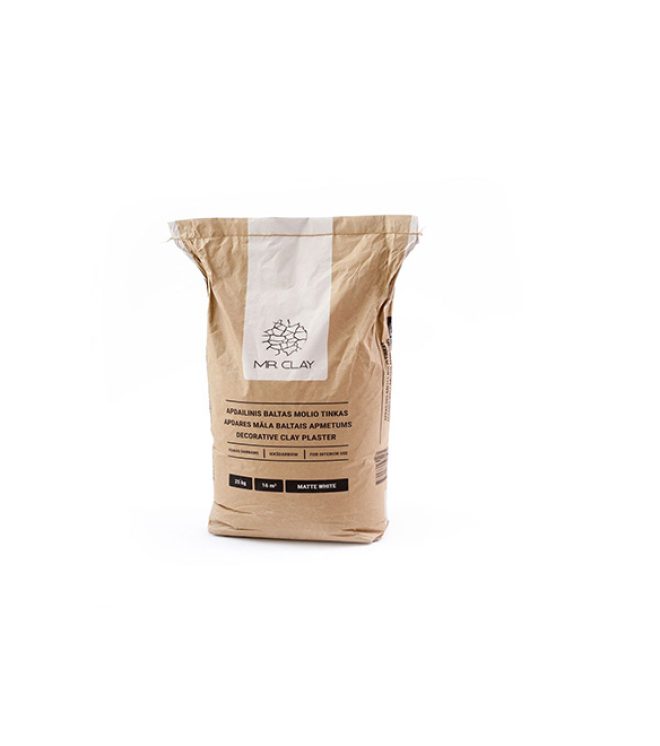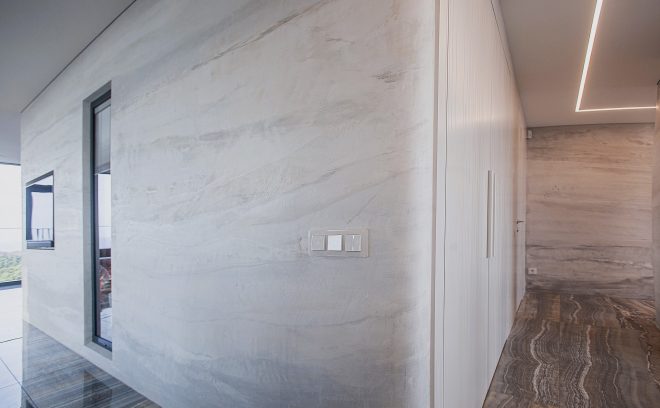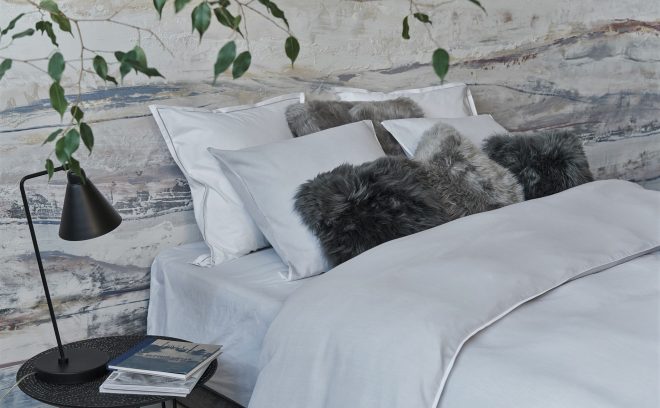



Dry mix of white clay, marble, cement and technological additives
The ingredients are not hazardous. It is mixed with water.




Dry mix of white clay, marble, cement and technological additives
The ingredients are not hazardous. It is mixed with water.
Bag 25,0Kg
The decorative clay plaster ClayBeton effect Clay Travertine is intended for the decorative finishing of interior walls in residential or commercial spaces. The product is vapor permeable and absorbs liquids, making it suitable only for dry areas without direct exposure to water, fuels or grease. It requires protection with a varnish – protective resin to improve performance.
The decorative clay plaster ClayBeton effect Clay Travertine is intended for the decorative finishing of interior walls in residential or commercial spaces. The product is vapor permeable and absorbs liquids, making it suitable only for dry areas without direct exposure to water, fuels or grease. It is required to be protected with a varnish – protective resin to improve performance.
It must be applied in one layer, 6-8 mm thick. The decorative finish of Travertine marble is achieved by applying a specialized PVC membrane to the surface.
Preparation
Mixing preparation
Pour 8.5–9 L of water into a container (at least 35 L). If coloring is required, add all the pigment to the water and mix well with an electric mixer. Gradually add the ClayBeton effect Clay Travertine Decorative Clay Plaster to the water and mix well. Cover the container and let the mixture rest for about 10 minutes. Note that the wet mixture will look more intense than the final dry color.
Application
Protection
Although ClayBeton effect Clay Travertine walls are relatively hard, they are slightly absorbent due to their cement content, so priming and varnishing are necessary for improved performance.
Allow the wall to dry for at least 12 hours after removing the membrane before applying the protective resin/varnish.
Protective water-based varnish finish in Matte, Glossy and Satin finishes
Dry mix of white clay, marble, cement and technological additives
2024 Ιnterkas All Rights Reserved | Terms & Conditions